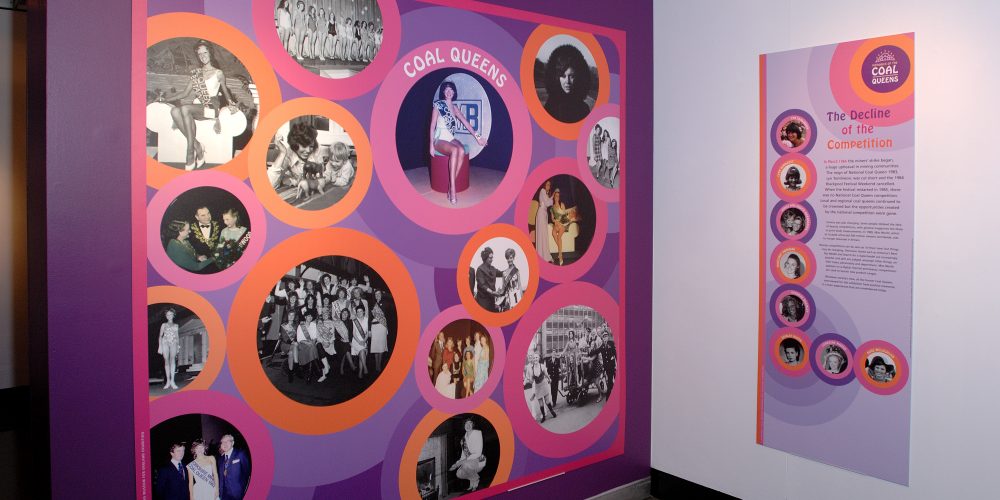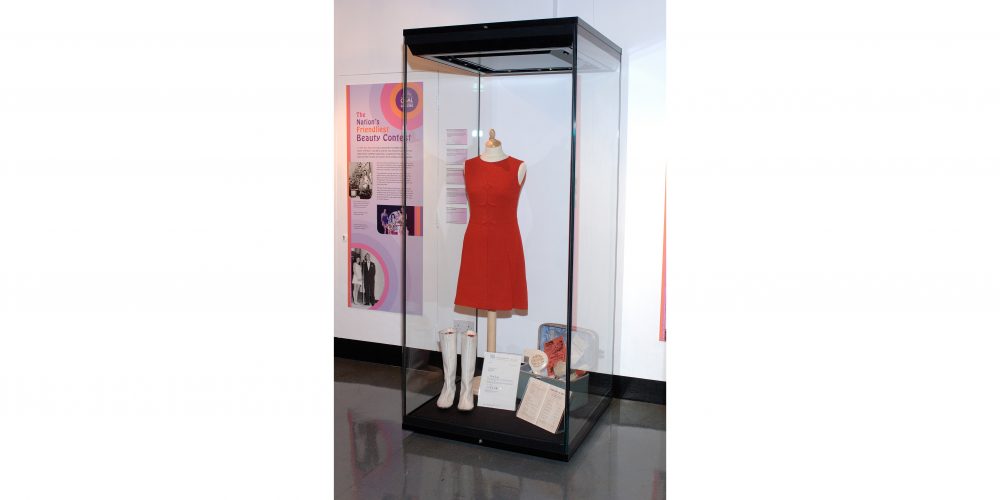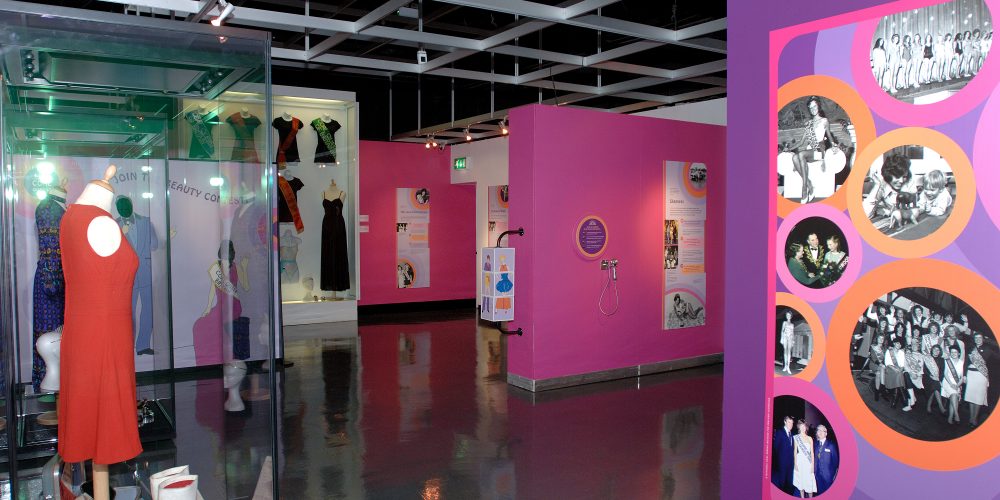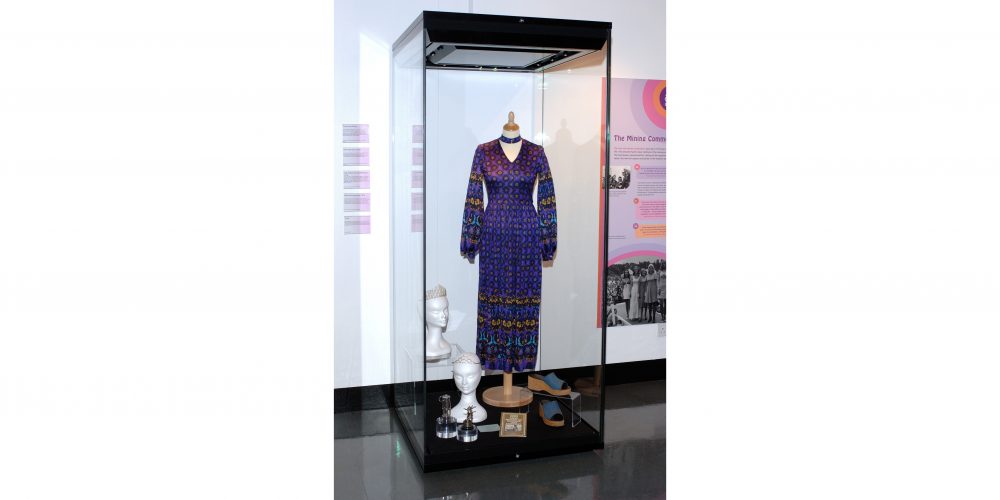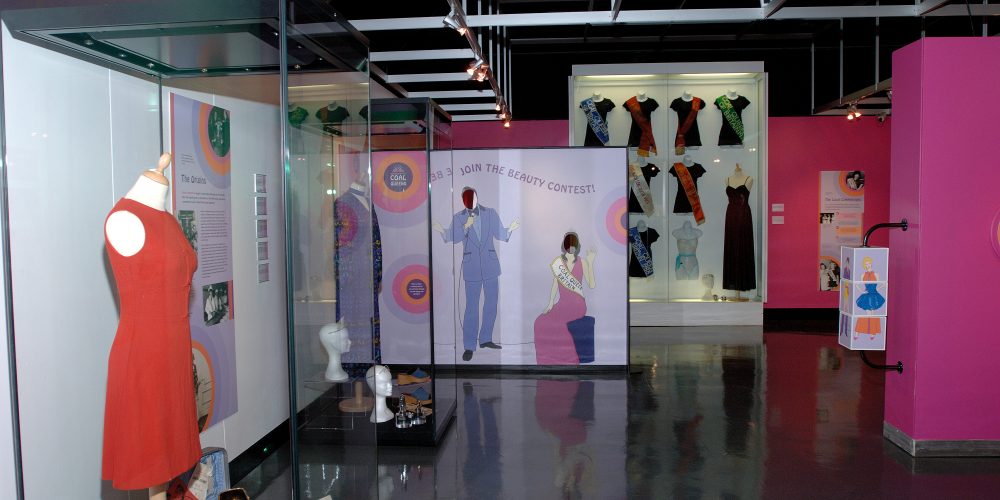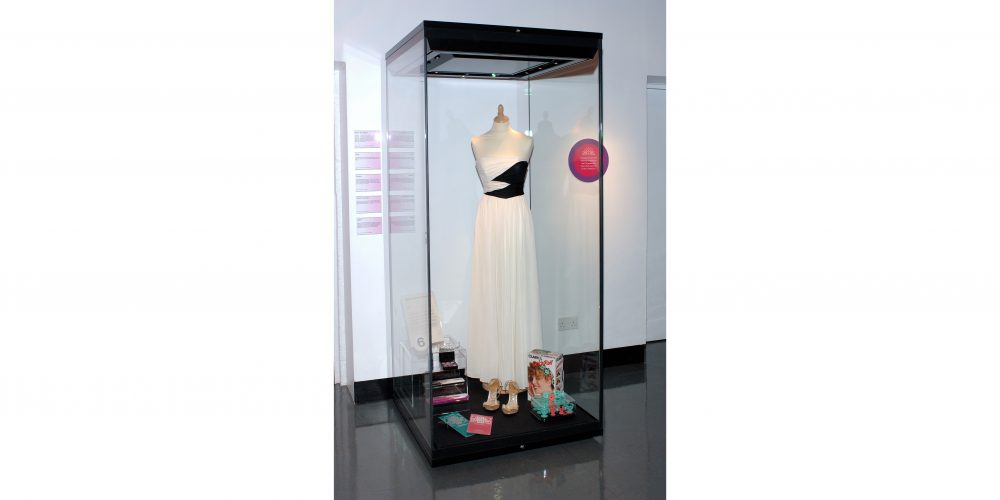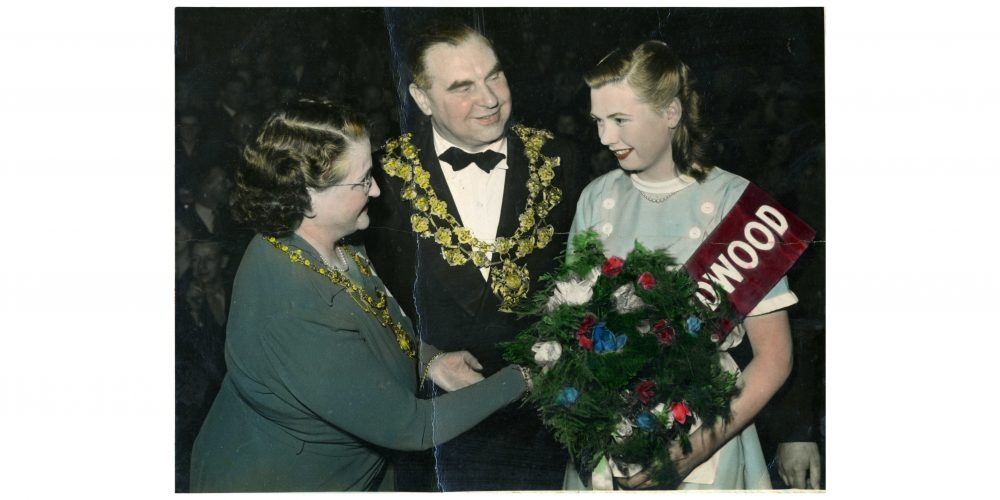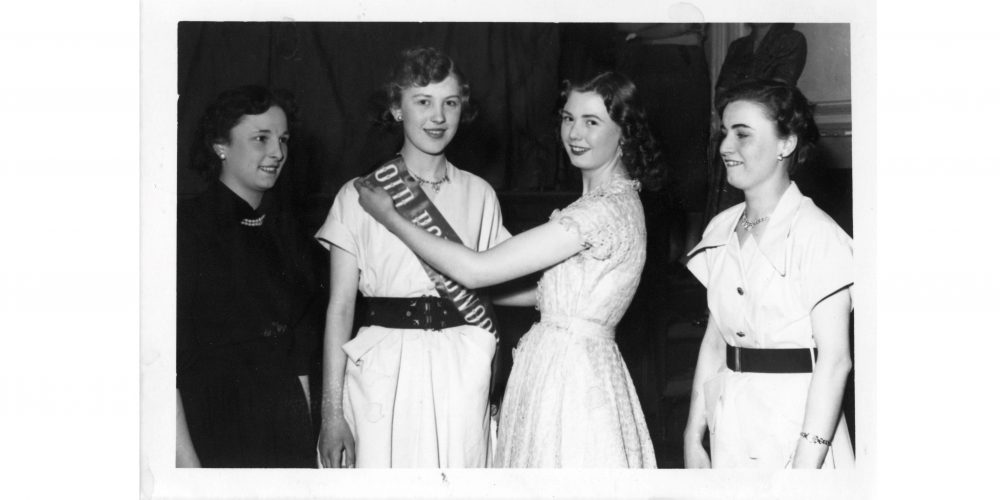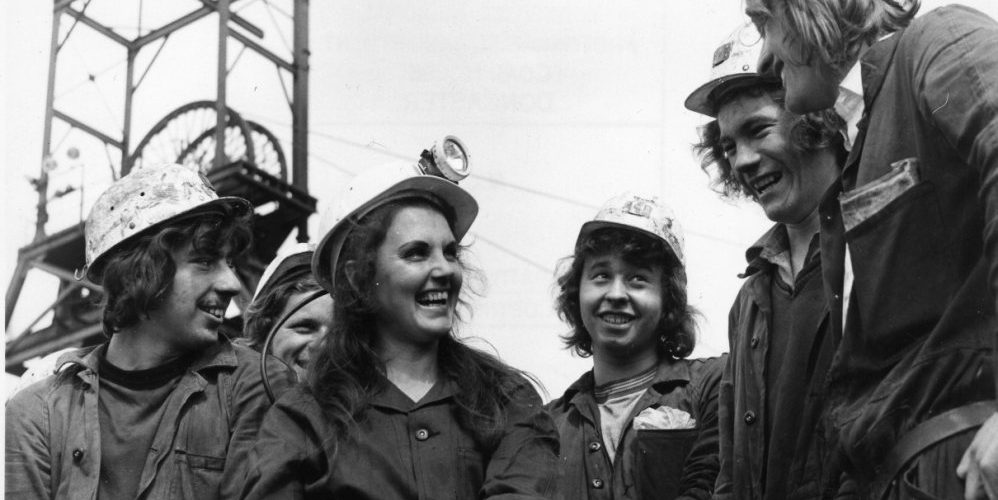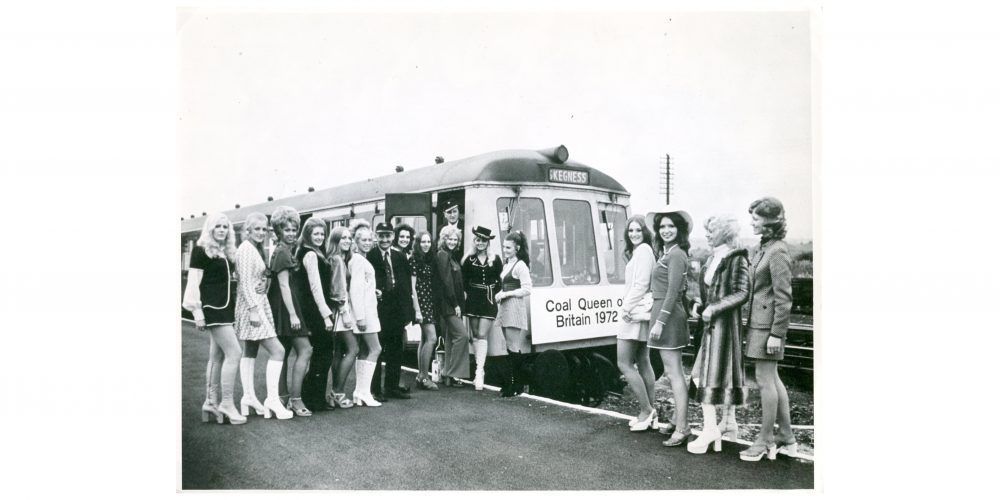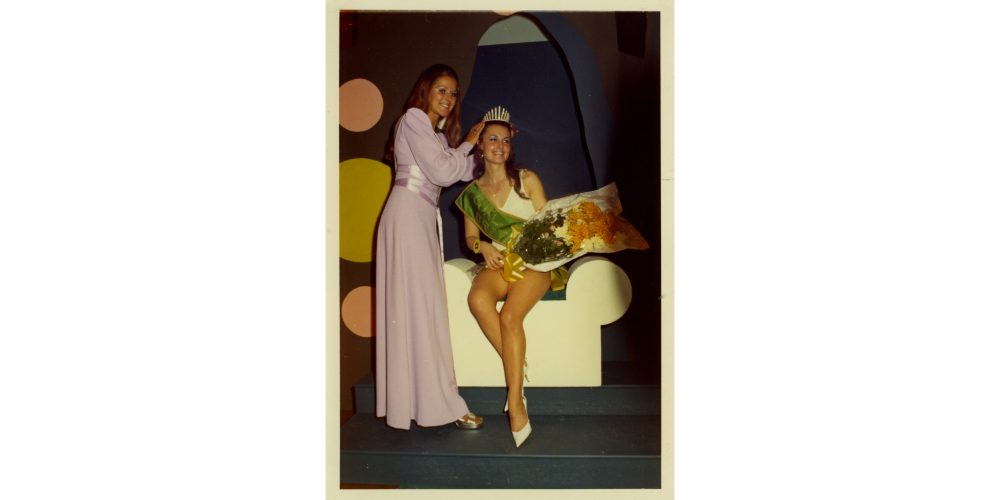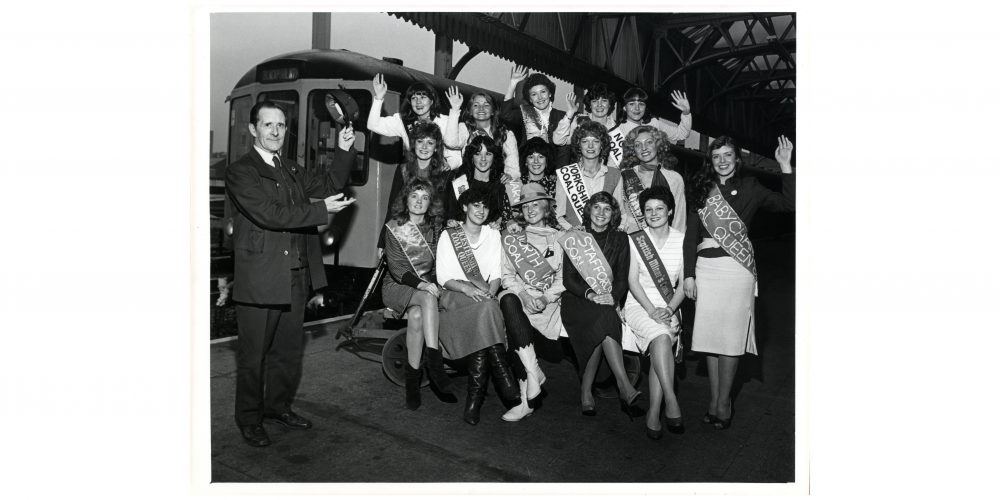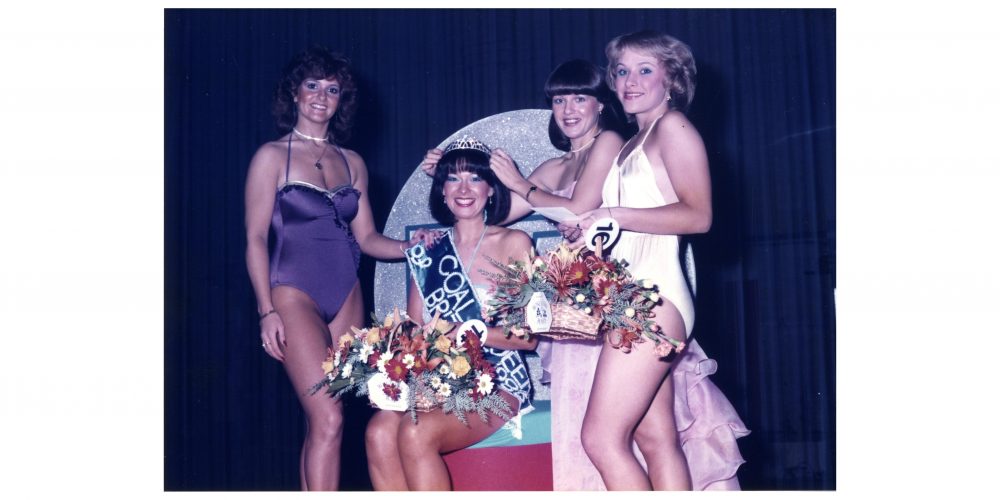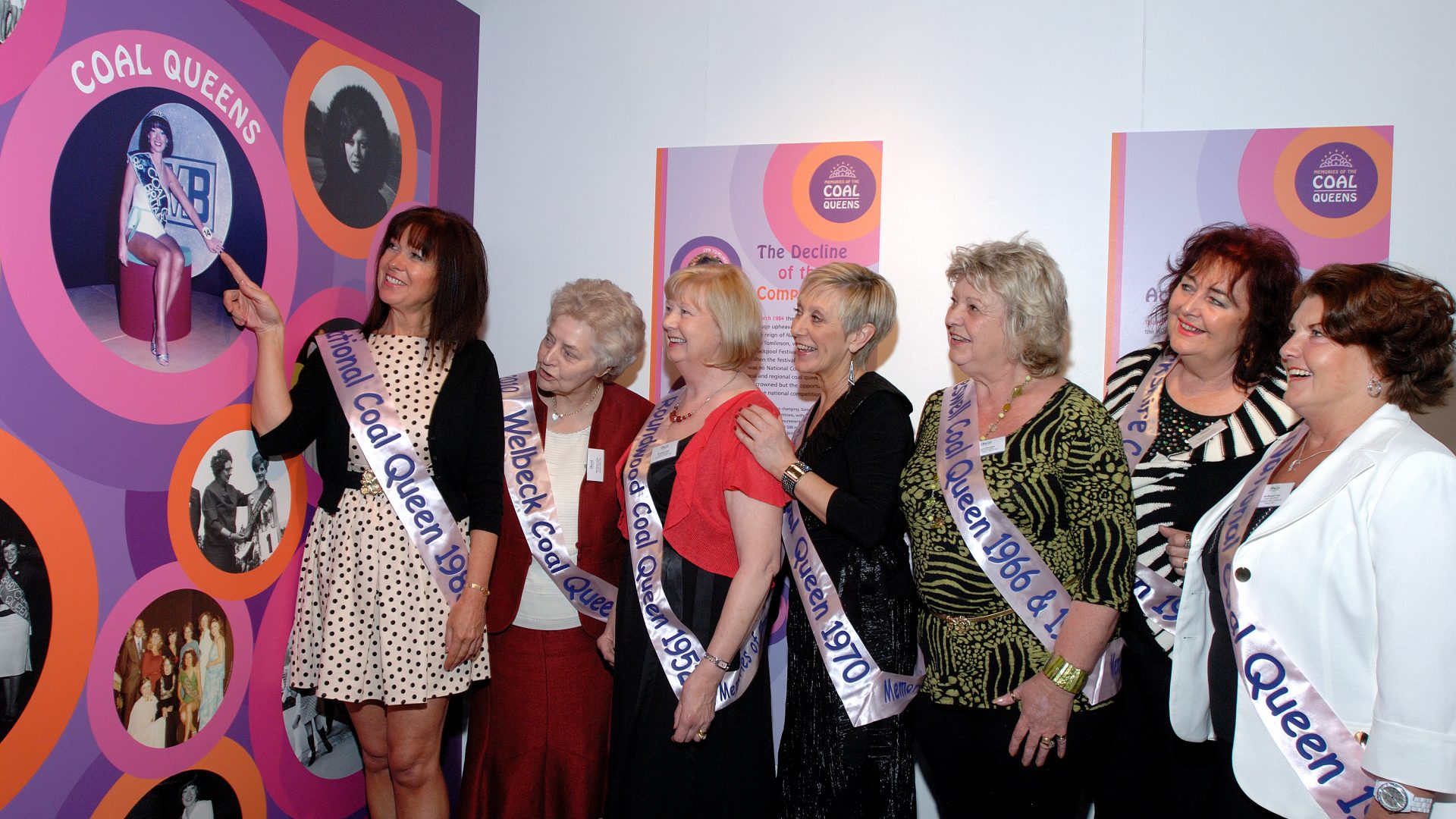
Memories of the Coal Queens
From an industry where King Coal reigned, we look at the “Memories of the Coal Queens”.
The little-known world of the coal queens is showcased in the Museum’s 2010 summer exhibition. Starting at a small, local-colliery level, the coal queen competitions grew in popularity and size. Between 1969 and 1983 a National Coal Queen was chosen.
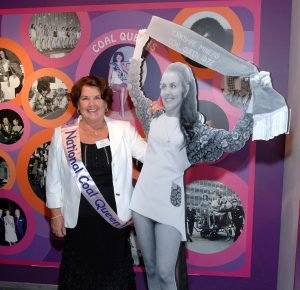 “I knew then that I would have to support the Coal Board, and do some promotion work, which was fantastic because I’d never done anything like that before. And so I started up and down the country, doing little jobs for the Coal Board, which strengthened my ability to promote the coal industry, and also gave me more confidence” Margaret Dominiak, Yorkshire & National Coal Queen, 1972.
“I knew then that I would have to support the Coal Board, and do some promotion work, which was fantastic because I’d never done anything like that before. And so I started up and down the country, doing little jobs for the Coal Board, which strengthened my ability to promote the coal industry, and also gave me more confidence” Margaret Dominiak, Yorkshire & National Coal Queen, 1972.
The Coal Queen competition gave new opportunities to girls and women from ordinary mining families. The national winner won a wide range of prizes, and was employed to represented the National Coal Board for the year, at events around Britain such as the Ideal Home Show.
 Using oral history interviews with former winners, photographs, clothing and accessories, this exhibition seeks to uncover a different side to the mining industry through their stories and share their memories. With a chance to see clothing and accessories worn by former winners, a specially recorded coal queen film, and coal king and queen dressing-up activities for children, this free exhibition has something for everyone.
Using oral history interviews with former winners, photographs, clothing and accessories, this exhibition seeks to uncover a different side to the mining industry through their stories and share their memories. With a chance to see clothing and accessories worn by former winners, a specially recorded coal queen film, and coal king and queen dressing-up activities for children, this free exhibition has something for everyone.
The Nation’s Friendliest Beauty Contest
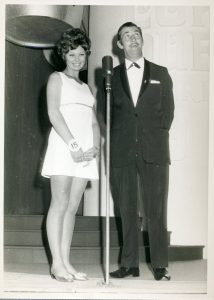 In 1969, Rose McLachlan was crowned the first National Coal Queen of Great Britain. Coal News and the Coal Industry Social Welfare Organisation (CISWO) supported a competition that gave new opportunities for girls and women from ordinary mining families.
In 1969, Rose McLachlan was crowned the first National Coal Queen of Great Britain. Coal News and the Coal Industry Social Welfare Organisation (CISWO) supported a competition that gave new opportunities for girls and women from ordinary mining families.
Small local contests developed into a large national event. The national competition winner represented the National Coal Board at many events during their reign, and won prizes such as holidays, clothes and money.
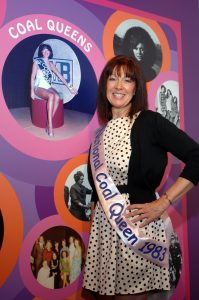 The competition’s mining roots had a strong link with regional miners’ galas. Before the national competition began, many pits crowned a local miner’s daughter or wife as queen. The new glamorous event which began in 1969 was the chance to win a year’s reign packed with duties and prizes. 1983 saw the last National Coal Queen. Lyn Tomlinson’s reign was cut short by the start of the Miners’ Strike.
The competition’s mining roots had a strong link with regional miners’ galas. Before the national competition began, many pits crowned a local miner’s daughter or wife as queen. The new glamorous event which began in 1969 was the chance to win a year’s reign packed with duties and prizes. 1983 saw the last National Coal Queen. Lyn Tomlinson’s reign was cut short by the start of the Miners’ Strike.
The Mining Community
The local and regional competitions were part of mining community life. All entrants had to have relatives in the mining industry and the local queen represented ‘her’ colliery at the regional and national heats. The support and pride of the workers was behind her.
“All of us felt that we were very much representing our coalfields and areas and the men and families that we knew, because we were all coal folks.” Deborah Bramley, Northumberland, 1982.
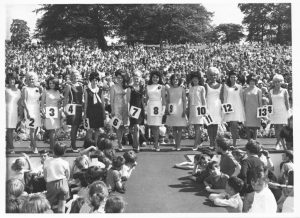
The National Union of Mineworkers (NUM) gala day, where the regional queen was chosen, was a huge family day of celebration and fun. The site of the gala might change annually; the Yorkshire gala rotated between coal mining towns. However, the Mansfield area gala was always held at Berry Hill.
“There were lots of beer tents and craft fairs …the miners used to walk through Wakefield with the banners of the NUM, usually Arthur Scargill and members of the NUM were there, and it was a lovely day … and of course the Coal Queen competition was the highlight of the afternoon.” Margaret Dominiak, Yorkshire & National, 1972.
The National in Blackpool
The first Mining Festival Weekend, at Blackpool’s Winter Gardens in 1977, celebrated the 30th anniversary of the coal industry’s nationalisation. Blackpool became the competition’s new home.
All fifteen finalists won prizes such as hair products, cosmetics and champagne. First, second and third place also won a foreign holiday with spending money, fashionable clothing and a modelling course. Rose McLachlan’s holiday in 1969 was a fifteen day safari for two, in East Africa. In 1973, first prize included the use of a Morris Marina car, a sewing machine and a pastel portrait.
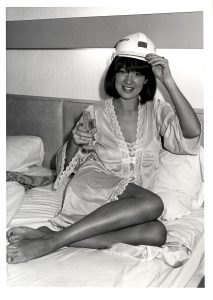 “There was a special meal laid on for the Coal Queens… It was such a whirlwind, I was whisked off somewhere else… the next morning they were in with the cameras, champagne in bed. I’d probably had about two hours’ sleep” Lyn Tomlinson, Nottinghamshire & National, 1983.
“There was a special meal laid on for the Coal Queens… It was such a whirlwind, I was whisked off somewhere else… the next morning they were in with the cameras, champagne in bed. I’d probably had about two hours’ sleep” Lyn Tomlinson, Nottinghamshire & National, 1983.
Winning the National Contest also brought a year packed with duties. The winner became the face of the mining industry.
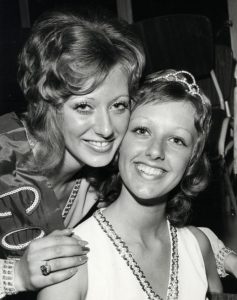 Judith Hargreaves, 1971 National Coal Queen, was the celebrity on the NCB stall at the International Mining Exhibition in London’s Earls’ Court. Next year Margaret Dominiak met the Queen at the Ideal Home Exhibition. Judith also opened a London steam rally with Ted Rogers and modelled to promote a new rose called ‘Living Flame’.
Judith Hargreaves, 1971 National Coal Queen, was the celebrity on the NCB stall at the International Mining Exhibition in London’s Earls’ Court. Next year Margaret Dominiak met the Queen at the Ideal Home Exhibition. Judith also opened a London steam rally with Ted Rogers and modelled to promote a new rose called ‘Living Flame’.
The Decline of the Coal Queens
In March 1984 the miners’ strike began, a huge upheaval in mining communities. The reign of National Coal Queen 1983, Lyn Tomlinson, was cut short and the 1984 Blackpool Festival Weekend cancelled. When the festival restarted in 1985, there was no National Coal Queen competition. Local and regional coal queens continued to be crowned, but the opportunities created by the National Competition were gone.
Society was also changing. Some people disliked the idea of beauty competitions, with general magazines less likely to print body measurements. In 1989, Miss World, which at its peak attracted 500 million viewers worldwide, was no longer televised in Britain.
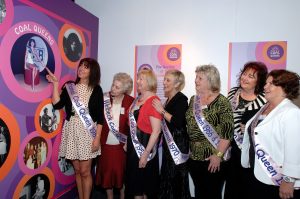 Whatever society’s view, all the former Coal Queens interviewed for this exhibition have positive memories. It is their experiences that are remembered today.
Whatever society’s view, all the former Coal Queens interviewed for this exhibition have positive memories. It is their experiences that are remembered today.
